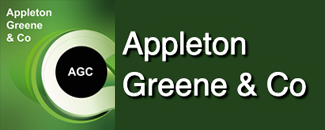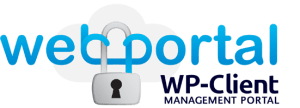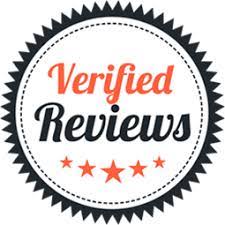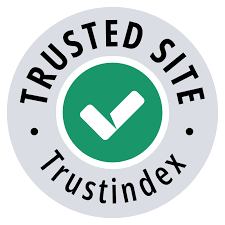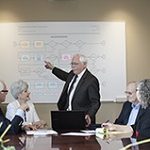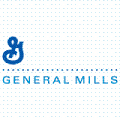Business Optimization
Executive Summary Video
The Appleton Greene Corporate Training Program (CTP) for Business Optimization is provided by Mr. Erickson MBHRM BSEE Certified Learning Provider (CLP). Program Specifications: Monthly cost USD$2,500.00; Monthly Workshops 6 hours; Monthly Support 4 hours; Program Duration 24 months; Program orders will be subject to ongoing availability. Please scroll down for further information.
Personal Profile
Mr. Erickson is a Certified Learning Provider (CLP) at Appleton Greene and has experience in management, human resources and production. He has achieved a Master in Business Human Resource Management and a Bachelor of Science in Electrical Engineering. He has industry experience within the following sectors: Construction; Consultancy; Consumer Goods; Food & Beverage and Manufacturing. He has had commercial experience within the following countries: United States of America, Canada, Denmark, and Japan, or more specifically within the following cities: Minneapolis MN; Denver CO; Edmonton AB; Nakskov and Tokyo. His personal achievements include: growing $12M business to $40M; implementing financial management control processes; training founder to be CEO; reorganizing operating departments that improved throughput and established performance improvement processes. His service skills incorporate: business strategy; organizational development; business systems; leadership development and financial management.
To request further information about Mr. Erickson through Appleton Greene, please Click Here.
(CLP) Programs
Appleton Greene corporate training programs are all process-driven. They are used as vehicles to implement tangible business processes within clients’ organizations, together with training, support and facilitation during the use of these processes. Corporate training programs are therefore implemented over a sustainable period of time, that is to say, between 1 year (incorporating 12 monthly workshops), and 4 years (incorporating 48 monthly workshops). Your program information guide will specify how long each program takes to complete. Each monthly workshop takes 6 hours to implement and can be undertaken either on the client’s premises, an Appleton Greene serviced office, or online via the internet. This enables clients to implement each part of their business process, before moving onto the next stage of the program and enables employees to plan their study time around their current work commitments. The result is far greater program benefit, over a more sustainable period of time and a significantly improved return on investment.
Appleton Greene uses standard and bespoke corporate training programs as vessels to transfer business process improvement knowledge into the heart of our clients’ organizations. Each individual program focuses upon the implementation of a specific business process, which enables clients to easily quantify their return on investment. There are hundreds of established Appleton Greene corporate training products now available to clients within customer services, e-business, finance, globalization, human resources, information technology, legal, management, marketing and production. It does not matter whether a client’s employees are located within one office, or an unlimited number of international offices, we can still bring them together to learn and implement specific business processes collectively. Our approach to global localization enables us to provide clients with a truly international service with that all important personal touch. Appleton Greene corporate training programs can be provided virtually or locally and they are all unique in that they individually focus upon a specific business function. All (CLP) programs are implemented over a sustainable period of time, usually between 1-4 years, incorporating 12-48 monthly workshops and professional support is consistently provided during this time by qualified learning providers and where appropriate, by Accredited Consultants.
Executive Summary
Business Optimization – History
In 2009 Mr. Erickson, developed a business consulting process to help owners of small and medium sized businesses improve the performance and ease of operations of their companies. This process evolved into the Business Optimization Process (BOP).
His consulting services initially focused on helping these owners learn how to better operate their businesses by applying sound business principles to their sales, operations, distribution, and financial management areas. Mr. Erickson’s knowledge and experience came from years of working in various technical, managerial and executive positions in large and medium sized corporations. He felt the best way to effectively improve business performance was to integrate the concepts of Systems Theory and Thinking, the Theory of Constraints, and Transformational Leadership into a comprehensive management process.
Systems Theory and Thinking apply to the way any organization operates. Organizations are systems and thus are influenced by certain laws, characteristics and principles. Change becomes easier when these laws, characteristics and principles are understood as they apply to a given organization. The Theory of Constraints applies to any organization and, in a nutshell, says that the throughput or performance of any organization is limited by a single constraining point. Finding and correcting this constraining point immediately improves a company’s throughput capacity and thus its performance. Transformational Leadership is a style of leadership that effectively creates focus throughout an organization by having a clear vision of what needs to be accomplished. This vision is the driver behind the leadership efforts and is effective at motivating the people throughout the organization to accomplish the improvements needed.
As his client base grew Mr. Erickson began to expand his approach to the way his company provided consulting services. The approach evolved into a four phase business improvement model (“Model”) where all phases are interrelated and interconnected. These phases were specifically developed to help owners create the improvements needed in their business so they would have the freedom to do what they would want with their business. The Model guided business owners in effectively improving their business from how their business was currently operating to how it needed to operate in order to meet the owner’s goals.
The first phase of the Model was the Planning phase. This phase included a combination of Ownership Planning and Business Planning. The philosophy of the Model is that a business is basically one of several tools an owner chose to help them achieve their personal goals. Therefore, business planning was driven by the results of ownership planning. Ownership planning was the owner assessing what they want from life and how their business fits into their wants.
Planning led to the second phase, which was Optimization. During this phase the flow of work through the sales, operations, distribution, and financial areas of the company was first balanced and then systematically increased to improve the capacity, throughput and profitability of the company. This phase included improving operating processes and philosophies as well as applying cash management principles to the financial management practices so that targeted cash flow was realized from these profits.
The third phase was Building Value, which has to do with building sustainable and growing business value. This phase included developing managerial depth and processes, and implementing business communication tools that allowed those within the business to know what was expected of them and to give them feedback on the results of their efforts. The fourth phase of the Model included a process of ensuring that the owner had the proper financial base and documentation in place to ensure a smooth transition and successful exit.
As Mr. Erickson applied the principles of the Model to a growing number of businesses the need for teaching change management principles became more apparent. Most people, especially those in an ownership or executive management position understand the difficulty that change brings to any organization. The concept of resistance to change is all too apparent anytime an organization goes through change. Mr. Erickson used his corporate experiences in having led change efforts in large and medium sized companies and the knowledge gained through a formal post graduate business education to expand on the processes he used in the Model. The Model is the forerunner of the BOP.
Business Optimization – Current Position
The BOP is a corporate focused training program that effectively creates change throughout a company. One of the problems many companies have with their current training programs are they tend to focus on improving one area with the idea that if that area is improved the whole company should improve. Often company leadership believes the key problem lies in one area when in fact it may lie in a different area. When this happens, the effect from the training efforts are diminished and results in little to no real improvement in the overall performance of the company.
There are two prevalent reasons training efforts fail. These reasons are that the focus is on the wrong area and the training itself involves a limited number of employees. Owners who want to see improvement in the overall performance of their companies need to implement training processes that address the company as a whole and that are deigned to find and correct the right area. The BOP is designed to do just that.
As explained in the previous section the BOP has its roots in the Model. It is an improvement process that starts at the top of an organization and systematically focuses the entire organization on solving the one issue that is most limiting the performance of a company. In this way the whole organization is involved at different levels and each person involved learns the improvement process as it applies to their function within the company. It is a way to focus everyone’s efforts on solving the most critical problem. This approach puts everyone in the same boat and rowing in the same direction.
In the fast-pace world of competitive businesses it is becoming harder to find ways to effectively increase revenues and profits. It is becoming increasingly important that companies find ways to increase their performance while achieving a quick return on every training dollar they spend. It is also becoming increasingly important that companies create a working environment that is conducive to employee retention.
The BOP is designed to guide a company through the process of effectively implementing change. It is a process that involves employees from just about every job level beginning with the Owner and working its way through management, supervision and the rank and file employees.
The reason the BOP is effective is in the way it integrates the management concepts of Systems Theory and Thinking, the Theory of Constraints and Transformational Leadership. The BOP intertwines these established concepts into a process that focuses the resources of a company to achieving a single goal. This goal is finding and fixing the problem that is most limiting or constraining a company from improving its performance. Using this approach allows the focus to systematically funnel down to those who have the greatest impact on solving this problem.
The BOP by its nature able to help create significant changes in the way a company performs without creating a lot resistance to change companies often experience. Dealing with resistance to change can end up being expensive in the form of lost production and increased human resource and management issues, not to mention delays in achieving the benefits realized when the change is fully implemented.
Owners are also looking for ways to create significant improvements while minimizing disruption caused by people who are not cooperative or supportive of the change process or where working on the wrong problems or making the wrong decisions end up actually hurting the performance of a company rather than improving it.
The BOP is also a process that engages the employees in a way that reduces employee issues while creating skilled teams of employees that effectively and continually improve the company. This makes it easier to hire and retain employees, which reduces turnover. Reduced turnover has a direct impact on future training costs and a company’s ability to compete in today’s world of growing economies and opportunities. The BOP is a process that once learned can be repeated over and over again. It is an ongoing process that allows companies to rapidly identify and solve the current problem that is most constraining or limiting its ability to continually improve. The BOP gives companies an unsurpassed way to accelerate their performance, which can give them a competitive edge in today’s marketplace.
Business Optimization – Future Outlook
As competition increases it is going to become more important to increase the way organizations approach employee skill enhancement and organizational effectiveness. It is also going to be more difficult for business owners to find the time and resources to implement effective training that improves overall organizational effectiveness. On top of these two challenges many business owners do not know where to begin if they want to improve organizational effectiveness. These are what the BOP is designed to solve. This process is a comprehensive learning system that involves the whole company in a way that focuses the entire organization in improving business performance and giving it the ability to achieve more profits and top line revenue.
Loyalty of employees toward their employers and employers toward their employees seems to be waning. This is happening at the same time that competition for skilled employees is on the rise. Companies not only need skilled workers they also need organizational effectiveness to ensure that every worker is contributing to the goals and objectives of the company. Companies are facing growing competition while at the same time it is becoming more difficult for the consumer to differentiate between competing products and services. This means that a company’s organizational effectiveness will become increasingly important in determining its competitive advantage.
As we move into the future, corporate training will need to be increasingly focused on moving the whole organization toward achieving its goals. It will also become increasingly important to include and solicit participation from all employees from the top executives to line employees. One of the challenges will be to accomplish this type of training with minimal to no disruption of existing business requirements.
It will become increasingly important that future corporate training involves the whole organization beginning with articulated goals that are established at the top. The goals must be apparent to everyone throughout the organization and must drive the training focus. In order to have a positive effect on the whole organization, and thus improve overall performance, corporate training must be geared to the whole company, not just a few individuals.
The old saying, “the more things change, the more they stay the same”, will continue to be true. Regardless of the growth in technology, companies still need to operate using time-tested principals. These time-tested principals include the role of leadership in providing direction to an organization, the importance of teams in organizational effectiveness and the need for people to have the necessary skills while feeling they are important as individuals.
The BOP is ideal for those companies who need to improve their overall organizational effectiveness. Because the process systematically works its way down through a company it aligns everyone in contributing toward reaching corporate goals. It helps owners develop, quantify and articulate goals. It helps develop varying leadership skills with individual throughout the organization. It creates synergy among employees by developing effective team work at all levels. As a result it develops effective and efficient organizations, and it does this in a systematic way that creates little to no disruption, nor adds undue burden to any employee, from the top of the organization to the bottom.
As competitive pressure increases companies will continue to need to improve their marketing, human resource and technical skills. There are many types of training programs designed to help companies in these areas. However, it will become increasingly important for companies to also improve their overall organization effective and skills, beginning at the top and including everyone within the organization. The solution to improving this organizational effectiveness will be significantly helped by processes like the BOP.
Curriculum
Business Optimization – Part 1- Year 1
- Part 1 Month 1 Getting Started
- Part 1 Month 2 Second Step
- Part 1 Month 3 Leadership Team
- Part 1 Month 4 Team Goals
- Part 1 Month 5 Team KPIs
- Part 1 Month 6 Company Workflow
- Part 1 Month 7 Management Team
- Part 1 Month 8 Department KPIs
- Part 1 Month 9 Throughput Analysis
- Part 1 Month 10 Project Team
- Part 1 Month 11 Team Development
- Part 1 Month 12 Departmental Workflow
Business Optimization – Part 2- Year 2
- Part 2 Month 1 Department Metrics
- Part 2 Month 2 Problem Solving
- Part 2 Month 3 Communicating Goals
- Part 2 Month 4 Identifying Constraints
- Part 2 Month 5 Process Mapping
- Part 2 Month 6 Process Metrics
- Part 2 Month 7 Process Improvement
- Part 2 Month 8 Impact Analysis
- Part 2 Month 9 Improvement Implementation
- Part 2 Month 10 Measuring Results
- Part 2 Month 11 Reporting Results
- Part 2 Month 12 Executive Review
Program Objectives
The following list represents the Key Program Objectives (KPO) for the Appleton Greene Business Optimization corporate training program.
Business Optimization – Year 1
- Part 1 Month 1 Getting Started The top executive or Owner and his or her senior staff are the participants of this and the next two modules. The objectives are for the participants to gain an overall understanding of the Business Optimization Process referred to as the BOP and to take the initial steps in the implementation of the BOP. The initial step is leaning that BOP is mission driven. It is a corporate focused, team building process that teaches the skills needed to effectively improve an organization’s performance. It accomplishes this by training employees to systematically identify and solve the root cause of the problem that is most constraining the performance of the organization. It is a continuous improvement process that once implemented results in a higher level of satisfied customers and a more enjoyable work environment for the employees. These results lead to a financially stronger organization that brings long-term stability and better rewards and job security for everyone. The BOP integrates the principles of Systems Theory and Thinking, the Theory of Constraints, and Transformational Leadership. The participants will develop the mission and vision statements for the BOP. The mission statement clarifies the purpose of the BOP and provides direction for the organization during the implementation of the BOP. The vision statement shows what the company looks like after the mission is accomplished and inspires and challenges people to accomplish the mission. Anytime there is a companywide focus it is imperative that the Owner be the driver behind the effort. This can be scary and daunting to an Owner who already has more work on his or her plate than they can get done and who sees an organization that is in the same boat. Having a corporate focus is extremely important if a company is to see ongoing, sustainable growth. It is also important that this effort be planned and implemented in a way that does not disrupt the critical components of the ongoing business. The participants will gain a basic understanding of Systems Theory and Thinking and how it applies to their organization. Organizations are systems and as such adhere to certain laws, characteristics and principles that when understood make organizational change efforts less stressful and disruptive and more successful in the end.
- Part 1 Month 2 Second Step
The objectives are to have the participants set goals and strategies for the BOP and to learn the second principle of the BOP, the Theory of Constraints (ToC). The ToC is a systematic method using the laws, characteristics and principles of System Theory and Thinking to lead an organization through a problem solving process. This process helps employees effectively find the root cause of the problem that is most constraining the throughput of an organization. The mission for the BOP was determined during the first module. During this second module the participants determine the cash flow required to achieve the mission. In order to produce a given level of cash flow a company must achieve a certain level of throughput. Throughput is the amount of products or services a company can efficiently produce and deliver to a client in a specific period of time. Once the level of throughput is determined strategies to achieve this throughput need to be developed. Often goals are throttled back because of perceived throughput limitations that set artificially low ceilings that Owners accept. They accept these ceilings because they are unsure how to effectively raise them. The focus of ToC is on improving overall throughput of a company. ToC starts with the premise that the goal of every company is to make money. Historically, companies have more often than not concentrated on reducing costs to make more money. Though controlling costs is obviously important it is always a short term focus and often ineffective in creating long term improvement. Without increasing throughput, improvement is eventually limited by the amount of costs that can be reduced. The ToC aligns the whole organization to focus on company goals and improving key areas to achieve these goals. ToC is designed to not only improve the bottom line but to create a culture of cooperation and the creative energy needed to reverse entropy and overcome inertia which are inherent in any system. In almost all cases owners want is to maximize company profits in ways that benefit not only themselves but their employees, customers and vendors, and the local community to which they belong. Along with maximizing profits, most owners want to improve employee morale, reduce management stress, increase leadership throughout an organization, reduce overhead, and improve customer relations and retention. ToC accomplishes the above by harnessing every employee’s abilities in a synergistic way that accelerates a company’s performance. The results from implementing the BOP approach are not only improved business capacity and performance but improved worker loyalty, skill sets, productivity and satisfaction. - Part 1 Month 3 Leadership Team
The objectives of this module are for the participants to establish the Leadership Team and to learn the principle of Transformational Leadership. Not only is the application of Systems Theory and Thinking and the ToC essential to effectively improving company performance, so is leadership. Therefore, the third step in learning about the BOP is the need to develop transformational leadership skills in people throughout your company starting with the participants of this module. Transformational leadership is where the leader first creates a vision that is used to drive the organization forward. In order for the vision to drive the organization the leader must share it with his or her followers and the followers must understand and buy into it. The leader then helps his or her followers identify what needs to change in order to achieve the vision. This leadership style uses the vision as the starting point to inspire followers. This vision creates the energy and commitment among the followers to implement the required change. The BOP trains various employees throughout a company on leadership principles and skills. These individuals apply these principles and skills as they lead the various teams that are formed to implement the required changes. During the first module the Owner and his or her senior staff developed the mission for the BOP and the vision of what it looks like when the mission is accomplished. The participants learned Systems Theory and Thinking and how its laws, characteristics and principles apply to their company. During the second module the same participants determined the cash flow and throughput levels required to achieve the mission and set strategies to accomplish these levels. The participants learned the concepts of the ToC and how Systems Theory and Thinking is integrated with the tools of the ToC to create the change necessary to accomplish the mission. During this third module the Owner and his or her senior staff will integrate what they learned about Systems Theory and Thinking and ToC with the principles of Transformational Leadership in order to have a foundational understanding of the BOP. At the end of the module the Owner will select participants for the Leadership Team of which he or she is the team leader. - Part 1 Month 4 Team Goals
The objectives of this module are for the members of the Leadership Team to define the team’s role and goals. The roles will be defined so as to not be overly burdensome on the members of the Leadership Team or on the organization as a whole. The result will be an understanding of the Leadership Team’s purpose or charter, the BOP, team goals and responsibilities, and how team members work with each other. This includes establishing communication protocols by determining the frequency and structure of meetings, participants in these meetings, format for the communicating progress, etc. Another important aspect is determining the level of commitment from the members of the Leadership Team. The members of the team will jointly decide the goals for the team, which will align with the mission, goals and strategies established in the previous three modules. There needs to be open dialog between team members. Team members must be able to give input in establishing team goals, ask questions as to the reason behind a given goal and thoroughly discuss any goals or issues that are not clear. The goals must be “SMART” (Specific, Measureable, Attainable, Relevant and Trackable) and each member must agree that each goal meets these criteria. The members of the Leadership Team must get to the point where everyone agrees and commits to these criteria. If someone cannot do this the goal in question is further discussed until a resolution is determined. If a member simply cannot agree and is at odds with the rest of the team that person should be removed from the team and replaced if needed. After the goals are finalized the expected results will be quantified so that each goal has a measureable outcome. Each goal is then documented in such a way as it can be shared with appropriate personnel within the organization. In order for a business to be “firing on all eight cylinders” the flow of work through the organization must be in balance and capable of meeting the company’s objectives. Accomplishing this requires a company wide effort all focused on the same objectives. The Owner’s job is to ensure that this happens. The team provides management oversight and takes the responsibility for ensuring that the mission drives the BOP. - Part 1 Month 5 Team KPIs
The objective of this module is for the Leadership Team to learn about Key Success Drivers or KSDs and Key Performance Indicators or KPIs. KSDs are those few activities that are critical for achieving the results desired. If these activities do not happen you will not accomplish the mission. A KPI is a metric that measures the results of these key success drivers in a way that quickly communicates how a company is performing against meeting its mission objectives. Even though there are multiple activities associated with operating any company only a few of them are critical. The rest may be useful but if not performed properly will not affect achieving the mission. The Leadership Team learns how to determine, measure, and use KPIs. Properly defined KPIs help align the whole organization. This means that each area within the organization is focused on those activities whose results are reflected in the KPIs. Since these KPIs represent how a company is performing, the information gathered from each department should tie into these KPIs. A properly defined KPI provides the type of information that can act as an early warning indicator if something within the organization is drifting away from producing the value desired. It helps keep people throughout the organization focused and accountable for accomplishing their part in supporting the company. Each area and person in a company is thereby focused on those tasks that help the company accomplish its mission. Once the KPIs are established, company performance against each KSD is documented, establishing a baseline against which future performance is measured. This allows top management to see the ongoing improvements made and the impact of these improvements on the whole organization. These measurements also give an early indication if some of the activities need to be adjusted in order to keep progress on track. - Part 1 Month 6 Company Workflow
The objective of this module is for the Leadership Team to learn to map the flow of work as it passes through the company at the departmental level. Once they know how to map the flow of work they will learn to use this map to identify which department contains the most critical bottleneck that currently limits the company’s ability to effectively increase its business volume. The overriding reason behind the BOP is to ensure that the right problems are worked on and resolved. All too often companies spend their time fixing problems that end up not impacting the goals of the organization. To effectively begin to identify which problems need to be fixed the Leadership Team must first understand the way business flows through the company on a department by department, or function by function basis. Defining the Company Workflow involves creating a visible flowchart that identifies the major areas or functions within the company through which the company’s products or services flow. These major areas or functions are basically defined as the areas involved in finding the work (Sales), producing the work (Operations), distributing and delivering the work (Distribution), and funding the work (Finance). They can also include areas such as Product Development, Estimating, Logistics, etc. depending on the size of the areas and where they are within the company organization. The requirements in each area must be driven by the mission for the BOP. This module is called Company Workflow because it looks at the major areas or departments of a company and depicts how they relate to each other as work flows through the company. The responsibility for creating this map falls to the Leadership Team because its members are more able to see the big picture without being drawn down into departmental minutia. In other words, they are more able to see the forest and not all the individual trees. The trees will become apparent as the process works its way down through the organization. The Leadership Team will learn how to establish and draw this workflow map by looking at how value is added within and between each of the major areas or departments of the business. The members will then learn to identify the amount of work or business capacity of each department. The department with the lowest business capacity is considered the “constraining” department. - Part 1 Month 7 Management Team
The objectives of this module are for the Leadership Team to learn the process of forming a management team and to make sure that the members of the Management Team understand their roles, expectations, responsibilities and goals. The purpose of the Management Team is to carry out the directives of the Leadership Team. It is the second management layer in the organization and is comprised of key managers who are one level below the members of the Leadership Team. The Management Team is responsible for understanding the business process and how each department contributes to helping the company achieve its mission. They are responsible for directing a focused effort needed to determine the key areas within the constraining department that is preventing the company from achieving its goals. This team will be responsible for directing future problem identification and solving efforts. The Process will guide the Leadership Team as it forms this Management Team. The Leadership and Management Teams will learn how to determine the role of and goals for the Management Team. The result will be an understanding of the Management Team’s purpose or charter, the BOP, team goals and responsibilities, and how team members will work with each other. This will include establishing communication protocols between the Leadership and Management Teams. This will include determining the frequency and structure of meetings, participants in these meetings, format for communicating progress, etc. Another important aspect is determining the level of commitment from members of the Management Team. The Management Team will learn how the Leadership Team identified the business capacity of the constraining department and together the two teams will establish what the capacity should be if the company is to reach its goals. The Management Team will learn how to assess the impact of increasing the capacity of the constraining department. They will learn how to determine their options based on their assessments. The members of the team will better understand how the constraining department functions and what things impact the performance of the department. - Part 1 Month 8 Department KPIs
The objective of this module is for the Management Team to learn how to determine and apply KPIs for each department in order to align each department with company goals. For the same reason that the company determined its KPIs, each department must have its own set of KPIs that feed into the company’s. The same basic process used to establish the company KPIs is used here. The Management Team takes the lead, with input from the Leadership Team, and is responsible for establishing each department’s KPIs. One of the problems many companies face is that individual departments have their own set of performance measurements that do not necessarily align with the overall direction of the company. As an example, the corporate focus may be on achieving targeted gross profits or margins on its sales, where the sales department is focused on hitting certain sales numbers regardless of the gross profit generated by the revenue. As with company KPIs, departmental KPIs are no more than a dozen indicators that communicate to the department manager how his or her department is doing in contributing to the company’s strategic goals and direction. The Management Team with assistance from each department manager determines and documents the current performance or baseline of each department against the departments KPIs. This is necessary so improvements can be measured. Another reason for measuring the performance of a given department against its KPIs is to provide more of a business mindset among the department managers. Often, department managers are disconnected from the overall business goals of the Owner. Department managers can have a myopic view of the business because their focus is on their department’s performance and hitting the goals established for their department. They tend to have little understanding of what is and is not important to the overall business since their focus is only on their department. Looking at the performance of a department with KPIs that are aligned with company KPIs is often a change in thinking for a department manager. A manager who prides him or herself for performing well against previous expectations may resist or feel threatened when expectations change. Change must be managed so people do not perceive they are being punished when the rules shift. A lot of communication and discussions with each department manager must take place. These managers must be involved in helping determine the changes required within their department. - Part 1 Month 9 Throughput Analysis
There are three objectives for this module. The first is to for the members of the Management Team to learn how to use a workflow map to more fully understand the flow of business and be able to apply this knowledge to develop a future, more detailed workflow map. The second is for them to understand the maximum effective business capacity each department can handle in line with company goals. The third is for them to begin learning to work amongst themselves as they dialog and define the business capacity in each department without becoming defensive or antagonistic. Instead, they will begin to learn how to work together as a synergistic team with the focus on achieving the overall goals and objectives of the company. During this step in the process the Management Team takes the Company Workflow map that the Leadership Team completed in Part 1 Month 6 and verifies their assumptions by determining the amount of business each department can handle. This is based on the maximum business, in revenue dollars that each department can effectively handle without making any capital investment. Direct costs are not considered capital investment. In other words, if a department would only need to hire direct labor or purchase more materials in order to produce more products or services, then it is not restricted in its capacity at this point. However, if adding more direct labor or materials would not allow a department to increase its throughput then the department is at capacity and this capacity becomes limiting. The result of this module will be a more thorough understanding by members of the Management Team for how work flows through the company and the general location of the most significant constraint that is limiting the business capacity of the company. - Part 1 Month 10 Project Team
The objectives of this module are for the Management Team to apply the process of creating a Project Team and to make sure that the members of the Project Team understand their roles, expectations, responsibilities and goals. This team is the third layer in the BOP and is comprised of the employees who have the most intimate knowledge of the way the constraining department operates. The purpose of the Project Team is to verify the constraining point in the constraining department and then develop and implement solutions that will improve the throughput at this particular point. The Management Team will be guided as it forms this Project Team and will apply what it learned when their team was formed. The Management and Project Team will determine the role and goals of the Project Team. The result will be an understanding of the Project Team’s purpose or charter, the BOP, team goals and responsibilities, and how team members will work with each other. This will include establishing communication protocols between the Management and the Project Teams. It will include determining the frequency and structure of meetings, participants in these meetings, format for the communicating progress, etc. Another important aspect is to determine the level of commitment from members of the Project Team. The Project Team will learn how the Management Team identified the constraint within the constraining department and together the two teams learn how they will establish potential solutions to increase the throughput at the constraining point. They will also learn how to assess the impact of increasing the capacity of the constraining department. They will learn how to determine their options based on their assessments. Going through this module will help members of the team better understand how this department functions and what things impact the performance of the department. The outcome of this module is for the Project Team to identify the most prominent bottleneck within the constraining department. Once this is accomplished it is time to burrow down into the bottleneck. - Part 1 Month 11 Team Development
The objective of this module is for the Project Team to learn how to function as an effective synergistic team. This will be accomplished with basic team development training techniques and will include involvement of the Management Team. Now that the ground work is set and before the Project Team starts focusing on how to increase the throughput of the department it is important that members of the team first know and buy in to the team’s charter. This is critical and the first step if the members of the team are to all pull in the same direction. There must be buy-in and public commitment to this charter by each team member. Any member that does not buy in to the charter must be replaced by someone who does. Once all members understand and have committed to the charter, team rules need to be clarified. These rules will establish the process by which problems are identified, decisions are made, disagreements are resolved, changes are implemented, and performance against benchmarks are tracked and communicated. In short, the objective of this module is to ensure that the Project Team becomes an effective, synergistic team that accomplishes the goals set by the Management Team. This training will also include a deeper look at the communication protocols established in the previous module. Well defined and developed communication protocol and rules reinforce the teams focus and ensures that each member of the team is fully engaged and supporting the direction established earlier. Participants will learn what constitutes effective communications. Having good protocols and rules makes it almost as easy to address negative issues as it is to address positive ones. Difficult problems that could cause the team to be in jeopardy of missing a benchmark can be addressed head-on in a way that pulls the team together in a problem solving attitude as opposed to ignoring these types of issues. Significant issues that contribute to why teams fail often boil down to how disagreements are handled, the clarity of roles and duties, and the way dissenting members communicate and discuss the reason behind their dissent. People withhold critical information because either they do not understand the criticalness of the information, do not feel it is their responsibility to communicate, afraid of “stepping on toes” or simply afraid of the potential repercussions (i.e. “shooting the messenger”). It is important that the members have a thorough understanding of what is expected of them. These individuals will be the closest to the problem and will have the greatest impact on solving the problem. Therefore, it is important that they learn about team dynamics and how to create a supportive and synergistic team environment. - Part 1 Month 12 Departmental Workflow
The objective of this module is for the Project Team with input from the Management Team to learn how to develop a visible detailed workflow map of the constraining department. The map will depict all operations within the department and how they are interconnected. Now that the Project Team has been established it is time to burrow down into this department to determine the most prevalent bottleneck that limits the amount of work that can flow through this department. Similar steps that were taken to produce the Company Workflow map are now used to develop a more detailed workflow that looks at each operational step with the constraining department. This is a critical step in understanding more fully how business flows through this department. The responsibility for creating this workflow map belongs to the Project Team. They are closer and more able to see the right level of detail that would be missed by the Management Team. The Project Team learns how to establish and draw a more detailed workflow map by looking at how the key processes within this department are connected. This begins by looking at the point work leaves the department and working backwards through the department to the point that it receives the work from the previous department. As an example, the department produces a widget and sends it to the finished goods warehouse. Prior to this step the widget has to be assembled which cannot happen until the raw material warehouse delivers the components necessary to produce the widget, which is the preceding department in this workflow. A widget can be a step in producing a material product or a step in providing a service. Regardless, each step within a company should add increasing value to the finished product or service while not hindering the company’s output capacity.
Business Optimization – Year 2
- Part 2 Month 1 Department Metrics
The objective of this module is for the Management and Project Teams to learn how to determine and establish the types of metrics that will be used to track progress toward reaching the goal of the BOP within the department. Proper metrics and visibility of these metrics not only help keep the departmental organization focused, but also provide the ability to quickly identify when the results begin to deviate from a goal. This gives the people the opportunity to make timely corrective action to ensure that the program stays on track. There are three levels of metrics. The first is measuring the activities of team participants to make sure that everyone is doing what they are assigned to do. The second is measuring the outcome of these activities. The third is ensuring that these activities produce results that align with company goals and that are reflected in company and department KPIs. The team will learn and apply rules that are used to develop effective metrics. They will learn and apply hierarchical metrics that involve the above three areas and that communicate progress to department and to upper management. Once metrics are established it is important to document how the various operations within the department are performing against each metric. Improvements can then be quantified as the department moves through the BOP. This is necessary so that improvements from current performance levels can be documented. Each metric is to be validated to determine if it reflects the KPIs of the department. It is up to the Project Team to ensure that departmental metrics feed into the company KPIs. Aligning operational steps with key metrics often creates significant changes within a department. This change, if not implemented correctly can cause stress and negative energy within a group of people. It is important that these changes be conducted in a positive and non-threatening manner. A group of employees that prides itself on performing well against previous expectations may resist or feel threatened when expectations change. Again, as with the department managers, change must be managed and people must not perceive that they are being punished when the rules shift. A lot of communication and discussions with the employees must take place and they must be involved in determining how they can move their operation from where it is to where it needs to be based on the new or modified metrics. - Part 2 Month 2 Problem Solving
The main objective of this module is for the Project Team to learn team problem solving techniques. The Management Team is involved at some level so they gain an understanding of the approach the Project Team will be taking. A secondary, yet vitally important objective is to use the process of teaching problem solving to reinforce what the Project Team learned in Part 1 Month 11 on team dynamics and to reinforce the rules under which the Project Team will operate. Fundamental to solving any problem is to identify where the problem first becomes apparent and then systematically work through the effects of the problem until the root cause is discovered. Until the root cause is discovered all efforts to solve the problem will simply cover up symptoms and the effects of the problem will never go away. To effectively solve any problem the root cause must be identified and eliminated. This is accomplished by making a list of potential causes then systematically going through each potential cause to evaluate its impact. The cause that seems to have the biggest negative impact will become the focus of the change. The next step is to make a list of potential solutions and then systematically evaluate each potential solution to determine if it will correct the root cause. The third step is to evaluate how to apply this change in a way that does not disrupt critical functions during the change process. The fourth step is to evaluate the potential results to determine if there will be any undesirable effects from the change. This thinking process is circular until the team is convinced that the selected change will eliminate the root cause without creating more problems than it solves. - Part 2 Month 3 Communicating Goals
The objective of this module is for the Project Team to learn how to articulate its goals and associated metrics in a positive and understandable way and communicate this information to the people impacted by the changes. It is also intended to explain the BOP process, the role of the Project Team and how various employees could be involved. The Project Team will outline the BOP and their team charter structured in a way that speaks to the employees within the department. The Project Team will list their goals and priorities, the reason these goals and priorities have been selected, and how performance will be measured. The team will use this information to develop an effective presentation and then present it to those people most closely associated with the constraining operation. Not only will the Project Team present the goals and metrics, they will also explain how progress toward meeting these goals will be measured and displayed. During the presentation employees will be given the opportunity to ask questions and give constructive suggestions. The purpose is to reinforce the reason for using the BOP, ensure that employees understand what will be taking place and to get support from these employees. It is a broadening of the team building process that took place earlier. The information presented is focused on the employees in the constraining department and the reason why this department was selected. The meeting is informal allowing two way dialog that gives the employees the ability to ask questions or voice concerns. Some of the members of the Management Team will be present to reinforce the charter of the Project Team to the employees and to show management support and involvement. It will provide the opportunity for employees to ask questions that may not be able to be answered by the Project Team. The result will be a group of employees that understand how their lives will be impacted and how the outcome will benefit them along with the company as a whole. - Part 2 Month 4 Identifying Constraints
The objective for this module is for the Project Team to learn how to use the Department Workflow map developed earlier to identify the major constraint within the department. The Project Team takes the Department Workflow map and determines the amount of volume each operation within the department can handle. This is based on the maximum business in revenue dollars that each operation depicted in the Department Workflow map could effectively handle with no additional capital investment. Direct costs are not considered capital investment. In other words, if an operation would only need to hire direct labor or purchase more materials in order to produce more products or services, then it is not restricted in its capacity at this point. However, if adding more direct labor or materials would not allow an operation to increase its throughput then the department is operating at capacity. The process that the Project Team will use will give it the ability to identify where this point is. The outcome of this module is for the Project Team to define the operation that has the lowest business capacity as identified by team member consensus. This process will help the team better work together to define the business capacity in each operation without becoming defensive or antagonistic. They will become a more synergistic team focused on their contribution toward achieving department goals and objectives. Now that the lowest capacity operations is identified and agreed upon by the members of the Project Team the next step is to burrow down into this operation to determine what is causing the constraint within the operation. - Part 2 Month 5 Process Mapping
The objective of this module is for the Project Team to learn how to develop a visible process map of the constraining operation as defined in the previous module. The first step is for the Project Team to understand the way work flows through the constraining operation within this department. The same process that was used earlier by the Project Team to create the Department Workflow will be used to map out all the processes involved in moving work through the constraining operation. The function of this team is to closely look at and dissect every step associated with this operation. The Project Team will create a process map of the constraining operation. A process map is essentially a workflow map with more detail. It is an expanded mapping process of a single operation. The Process Map includes every step within the operation. The difference from earlier workflow maps is that the Process Map looks at all inputs from material flow, labor, scheduling, employee work rules, management practices, etc. The purpose of the Process Map is to visibly show all the steps in the operation and to identify which steps are dependent on other steps, whether influenced by things within the department or outside of the department. Some of the employees who directly work in this operation will be asked to participate in the mapping process. The Project Team learns how to develop a process map by looking at how all the required steps are connected. This is accomplished by again beginning at the end, which is where the work leaves this operation and working backwards through each preceding step. This process is repeated until every step involved in the operation is identified, including policies, practices, operating procedures, as well at individual positions, equipment, processes and location of work stations. - Part 2 Month 6 Process Metrics
The objective of this module is for the Project Team to learn how to determine and track those metrics that will quickly quantify the improvements of the constraining operation. These metrics will complement the metrics used by the department and the company. Team members will learn and apply rules that are used to develop effective metrics, metrics that are targeted to the particular operation. Proper metrics and visibility of these metrics not only help keep the Project Team focused, they also provide the ability to quickly identify when the results begin to deviate from a goal. This gives the team members the opportunity to make timely corrective action to ensure that the program stays on track. After the metrics have been determined for the particular operation it is important to document how the various steps within the operation are currently performing against each metric. This is important so that results from improvements can be quantified. Often new metrics are introduced and some of the older metrics are modified as people look at the mission of the BOP and gain a growing understanding of the BOP. It is important for the employees to understand these metrics and the reasons behind them. Employees need to know that every process within the company must be measured against how it is contributing to helping the company reach its goals. This will require educating those employees who are directly involved in the particular operation not only on process metrics but also on department KPIs and why these KPIs are important. The employees need to understand the role they play in contributing to the overall success of the company. This builds ownership thinking and makes the employees feel important and part of a bigger team. - Part 2 Month 7 Process Improvement
The objective of this module is for the Project Team to learn how to apply a combination of problem solving and brainstorming techniques learned in Part 2 Month 2. They will be guided through the process of effectively determining the top three reasons why a certain place in a process is limiting the flow of work. The objective is accomplished by the Project Team focusing on the area they identified while mapping the process. They will use the Process Map to develop a comprehensive list of every input that directly or indirectly affects the operation at the constraining point including policies, practices, procedures, work rules, operating steps, etc. From here the Project Team will be guided through an objective system that allows the team to prioritize the inputs that have the greatest impact on the way this process functions. They will learn to apply team focused problem solving techniques. Once the inputs are prioritized, the team will learn how to analyze the prioritized inputs to make sure that the list of inputs is complete and that each input does in fact affect the throughput at the constraining point. The expected results will be two or three potential solutions that will focus the team on where to put their resources in order to improve the flow at the constraining point while at the same time minimizing any disruption. In conjunction with applying problem solving techniques the members will be introduced to the concept of potential problem analysis. They will need to know potential repercussions from applying each of the top two or three solutions before any change is made. They will be trained in how to accomplish this in the next Module. - Part 2 Month 8 Impact Analysis
The objective of this module is for the Project Teams to learn how to determine potential positive and negative impacts and repercussions from each of the top two or three solutions. It is important to know how each solution will impact the cost, schedule, product quality, employees, department throughput, etc. during and after the time the solution is implemented. The Project Team will learn how to effectively proceed through the process of potential problem analysis using reverse brainstorming and bullet proofing techniques. The team will be guided through a process of identifying anything that could create problems while implementing one or more of the top two or three solutions. It is important that the team have this understanding before work begins on making any improvement. The Project Team will be guided through a simple cost-benefit analysis process to identify and list all the costs and benefits of each solution. Once the potential problems and the cost-benefits are established the team is ready to decide which solution will give the “biggest bang for the buck”. The Project Team will by consensus understand which solution should be implemented. They will understand the pros and cons to each solution and what needs to happen in order to minimize the risk of problems developing while implementing the solution. Part of this step will be developing contingency plans to work around a potential problem if they run into one. The team will then be ready to develop an action plan and make the improvements necessary to increase the throughput at the constraining operation. - Part 2 Month 9 Improvement Implementation
The objective of this module is for the Project Team to learn how to take the results of the previous module and develop an implementation plan. They will use the plan and apply the changes required in a way that does not disrupt critical business operations or product and service delivery. This involves the members of the Project Team working constructively together with other employees to determine how the solutions will be implemented. They will layout the sequence of activities and identify which employees are going to do what. They will understand how their actions will affect other parts of the company, what other parts of the company need to be involved, and how to coordinate their efforts. The Project Team will be guided through the process of determining how the solutions should be implemented. Based on the list of potential problems from the previous module, they will determine contingency plans to work around or solve any problems that negatively affect the ongoing business. They will be able to constructively respond to issues that may come up and modify their approach as may be needed. They will make sure all affected employees know what is happening. It is important when changes are made that the critical factors such as quality, delivery schedules and customer service levels. not be compromised. Therefore, part of determining a course of action will involve a company perspective of how the targeted point in the process impacts the overall output of the company. Once the critical factors are understood and contingency plans are in place, the team will begin to implement changes. They will be prepared to use one or more of the contingencies or work-arounds if implementation problems appear. - Part 2 Month 10 Measuring Results
The objective of this module is for the Project Team to learn how to establish simple and precise methods to measure improvements using the metrics and reporting formats established earlier. The metrics will be monitored on an ongoing basis by the Project Team. Data will be captured and documented. This will require assigning certain individuals to gather, quantify, and document the data in a way that can quickly communicate the results. The data, once documented will be distributed and will provide information concerning the progress made toward achieving the goals established at the beginning. A schedule and data collection routine will be established so team members know when to expect certain types of information. In order to best understand the nuances of an operation, the results of every change must be quantified. In addition to the impact on the constraining operation, the impact from every change on downstream and upstream operations must be monitored. If a change does not create the desired effect, or if it creates more problems than it solves, the change needs to be quickly modified or reversed. It is important that as the Project Team focuses on the constraining point that this focus does not create other problems that negatively affect other parts of the company. The Project Team will learn not only how to take and report on the established metrics, they will also learn how to use the information to make adjustments to their actions in order to create positive change that impacts the performance of the whole company. - Part 2 Month 11 Reporting Results
The objective of this module is for the Project Teams to learn how to report on the results of their improvements and use these results to make recommendations concerning further action. The recommendations will be based on the level of success. If the increased capacity meets the company goal, the BOP ends and the Owner and the Leadership Team determine if new goals are to be set. If the new capacity does not meet company goals but meets the Management Team goals set for the department, the department is no longer the constraining department. The Project Team reports success to the Management Team and disbands. The Management Team revisits the workflow throughput of each department and determines the next constraining department. A new Project Team is formed associated with the new constraining department. The BOP repeats itself beginning with the new Project Team. The training of the new Project Team will either be facilitated by an outside facilitator or by those trained in the first pass of the process, or a combination of the two. How this is accomplished will depend on the company and the feelings of the Owner and Leadership Team with input from the Management Team. If the actions taken do not adequately improve the throughput of the department, the department remains the constraining department. The Project Team revisits the department workflow and determines the next constraining operation. The Project Team repeats the process of identifying the next constraint. The Project Team informs the Management Team of their decision. Regardless of the decision made at this point, the Management Team, with input and involvement from the Project Team, develops a presentation with recommendations and reasons for the recommendations, and presents these recommendations to the Leadership Team. - Part 2 Month 12 Executive Review
The objective of this module is to have the Leadership Team and the Owner learn how to receive the information from the Management Team, decipher the financial impact to the company’s business performance and identify what improved business capacity means for the future of the company. They will know how to apply other measurements to determine the overall benefits to the company including improvements in policies, procedures, employee skill levels and attitude, management and human resource systems, employee attitudes and work ethics, etc. This module is the formal and official close of the BOP. It is a post mortem of the process where the effectiveness of each module will be discussed. This will, in large part, be a refresher for the Owner and Leadership Team of the first several modules. It will recap the results of each module so that the Owner and the Leadership Team more fully understand how to use the BOP going forward. Any nuances of the company and its organization will be identified and the process will be tweaked as may be required to make it more tailored to the company for future applications. The Owner and the Leadership Team will determine the next step. Based on the needs of the Owner he or she may decide to use this process in a simpler form and apply its principals to ongoing continuous improvement efforts. The Owner may decide to launch a new initiative and repeat the process from the beginning. He or she may decide to use parts of the process to teach others within the organization about team work, problem solving through the use of teams, how to continuously monitor performance with the use of KPIs, etc. At the close of this module the Owner with input from the Leadership Team will decide how to use this process in the future.
Methodology
Business Optimization – Program Planning
The BOP is the combination of three management and leadership theories. The first is the Theory of Constraints. This theory states that the amount of output that an organization can produce is limited or constrained by the throughput at a single point, or at most two or three points, either internal or external to the organization. The focus is on finding the constraining point and changing it so it is no longer the constraining point. The output of the organization increases until constrained by the next constraining point. This theory holds that you can continually increase the output of an organization by continually focusing the efforts of the organization on finding and removing subsequent constraining points.
The second theory is Systems Theory as it applies to business organizations. This theory states that in order for anything to be produced, there must be a set of interrelated activities working together to accomplish an overall goal. The system is understood when the activities and how they interrelate are understood. Systems can only be improved by improving the activities within the system and how these activities are interrelated, or both.
The third theory is Transformational Leadership. This theory states that in order to transform an organization so it operates more effectively its people must believe that their tasks are important and they must work together in a collaborative spirit to effectively solve problems or create new ideas. This first requires the leader to have a vision that is articulated and understood throughout the organization. It also requires an operating structure that lets people know their importance to the whole organization and brings them together in synergistic teams to determine how to change the way the organization operates.
The first six modules are designed to create a culture that reinforces these three theories and have upper management see how they can be applied in a way that creates a highly productive and synergistic organization. These modules will allow the business Owner and his or her top managers to see some early results as the BOP helps them better understand their organization. A Leadership Team that will oversee the implementation of the BOP will be formed.
Business Optimization – Program Development
During the next six modules the program is expanded from the Owner and top management to the next level of management within the organization. This level of management learns the BOP and begins the activities to transform the company. They will be introduced to the three theories and how they apply to company organizations. They will learn the principals of these theories and will begin to apply what they learn to create the changes required to improve the performance of the company. A Management Team will be formed to further direct the efforts of the implementation process. The Management Team will form a Project Team whose focus will be implementing the change that will increase the company’s level of output. Both teams will learn how to function as synergistic teams and where to direct their efforts.
The technical aspects of the BOP use the Theory of Constraints and Systems Theory. The Management Team will use what they learn as they go through the development phase to understand the actual workings of the company. They will diagram how work flows through their company. They will learn how to focus their efforts and direct the Project Team on pin pointing where the constraint in the process is located and how this constraint affects the output of the business.
The human aspect of the BOP uses the Transformational Leadership Theory beginning with the Owner establishing a vision for the whole organization. The Leadership Team will understand the vision of the Owner and the direction of the company. They will form the Management Team whose charter will be defined. This team will learn the technical aspects and begin applying them as they increase their understanding of how the company operates.
The training will expand to include a second group of employees who are one level below the members of the Management Team. This group will form the Project Team and will learn about the three theories and how to apply their principals to delving deeper into understanding how their department works. This application of these principals will lead them to understand where the constraint is located.
At the end of these six modules there will be a select group of second and third level employees working in synergistic teams who are motivated and who have the skill set to work through the coming problem solving and idea generating section.
Business Optimization – Program Implementation
As the program moves into the Implementation Phase the company has been going through a subtle yet deliberate cultural shift. This shift has been created by the top three levels of employees in the company and how are effectively working in a collaborative effort. The foundation is in place to have the employees believe in the principals of the BOP and for them to be motivated to apply these principals. At this stage the employees are beginning to apply constraint and system thinking processes to improve the performance of the company.
During the next nine modules the BOP will be thoroughly understood and embraced by those in the company. The focus of these modules is to instill the vision and create further motivation and synergistic team work among all employees who are associated with the operation at the constraining point. The primary focus of these training efforts will be toward the Project Team and teaching them how to make and implement the correct decisions.
The concept of metrics will be introduced to the Project Team. This concept says that you cannot control anything you do not measure. This concept will be introduced during the first module of this section. The thrust behind this section will be focusing Project Team efforts on the operation at the constraining point. This team will learn how to establish metrics, techniques for problem solving, and how to apply these metrics and techniques to increase throughput at the constraining point.
The last module of this section will involve the Project Team and appropriate non-management personnel. This group of employees will make the change to the process at the constraining point in such a way that the change accomplishes what it is supposed to accomplish without disrupting critical business requirements. This session will culminate by bringing all the training and activities associated with the BOP together so that the goals set during the second module of the BOP are achieved.
Business Optimization – Program Review
The last three modules focus on evaluating the effectiveness of the BOP. The first module begins by having the group of employees who implemented the changes and the Project Team learn how to quantify the results. These results will be based on the level of throughput at the constraining point after the changes have been implemented. The new level of throughput will be verified and the theoretical maximum throughput will be determined.
The second module will involve the Project Team learning how to take the results quantified during the previous module and create a report that will be used to communicate these results to the Management Team. The report will identify the new capacity of the department in which the constraining point was located. It will also explain the process used to make the changes, which areas of the company were affected, the cost and benefit from the changes, and recommendations for further action.
The last module will be the culmination of all the previous modules. It will include the Owner, his or her top managers, the Leadership Team, the Management Team and the Project Team. This group will review the results and the recommendations reported from the Management Team. This group will be led through a process of verifying the cost and benefits of the process. They will do a post mortem of the process and identify areas that should be tweaked in order to use the process more effective in the future. At the end of this module the Owner will determine what the next step should be in order for the company to continue to improve.
Industries
This service is primarily available to the following industry sectors:
Construction
One of the most significant changes in the construction industry during the past 50 years has been the reduction in the time required from job conception of a project to job completion. This has been made possible by the advances in computer technology. Fifty years ago the idea of CAD was just becoming an economically useable technology. However, it was mostly limited to the larger corporations and its basic function was limited to drafting and producing assembly and construction drawings.
Fifty years ago drawings used for bid and construction documents were produced by hand on vellum and printed using blue print machines. The construction process starting with architectural design through construction and startup was a linear process with little opportunity to shorten the time it took to complete a construction project. Critical path thinking was just becoming popular as a way to shorten this time.
Critical path thinking and mapping identified the various sequences of events or paths that were required to complete a construction project. The path that required the most time became the critical path. Once the critical path was identified effort was placed on finding ways to reduce the time through this path. When critical path thinking first started it was based on hand developed diagrams that depicted all the various paths of activities including the critical path.
Other management tools were also gaining in use such as Gantt and Pert charts. They too were hand developed. Personal computers, laptops, cell phones, and tablets were in the distant future. There was no such thing as digital information or electronic transmission. If drawings were needed quickly, an engineer jumped on a plane with a set of drawings or the drawings were shipped overnight to the job site by the fastest means possible.
Another significant change over the past fifty years has been the increase in governmental oversight and regulatory influences. Fifty years ago OSHA did not exist nor did the EPA. These two regulatory influencers have significantly changed the way construction projects need to be structured and managed.
Due in large part to the nature of the beast, the industry as a whole has been slow to adopt newer technologies. Though material and construction techniques have advanced over the past fifty years, the industry is still, for the most part, focused on how best to make a profit on a project by project basis. There has been little incentive to invest in longer term productivity enhancements. One of the key reasons is the low margins and heavy competiveness that has been prevalent within the industry. This makes it difficult for companies to have the resources and interest to invest in longer term R&D. While labor productivity has increased in just about all other industries it has decreased by 20% over the last fifty years in the construction industry.
The industry is beginning to “wake up” to the fact that they need to seek after and embrace newer technologies and systems. Construction projects continue to incur costly mistakes when specifications are incorrect or when workers fail to follow installation instructions or drawings, or adhere to specification requirements. Problems also happen when jobs are scheduled so tightly that one trade gets ahead of another causing confusion and rework.
The fast paced, low margin and competitive nature of this industry coupled with traditional management techniques continues to challenge project management processes. Regardless of the efforts put into critical path technologies, construction processes still tend to be linear putting increasing pressure on companies to quickly estimate and bid jobs. This results in incomplete and missing critical details during planning and design. These missed details end up adding cost and schedule delays as projects progress.
There has been an onslaught of new and modified regulations making it expensive and time consuming for construction companies to stay up to date. As a result companies, due to needing to stay competitive, are forced to determine how far they should go in complying with regulatory requirements compared to how much punitive risk they are willing to take. Companies typically look at the probability of “getting caught” compared to the potential cost when they are caught before determining how much expense and effort they want to incur to ensure 100% compliance.
Though there are standardized construction processes, each project tends to stand on its own with its own set of designers, estimators, and project managers. Because of the competitive nature of this industry companies are reluctant to share their processes with other companies. This is also true with individuals because they do not want to share what they do or how they do it since this knowledge is perceived as a person’s competitive edge.
This competitive nature permeates the culture within the industry and affects the way architects and contractors work together and with their vendors. There is often little involvement from contractors and their suppliers in providing insight and technological input in designing constructing projects. Architects and design engineers tend to interpret specifications with little involvement from their various suppliers. This can result in poor or incorrect specifications, which can have costly and sometime catastrophic consequences.
The industry is currently facing labor shortages in many areas. As volume ramps up companies are finding it harder and more expensive to fine qualified trade labor. Due to the cyclical nature of the industry people are used to going from job to job and company to company. There is little loyalty on the part of management toward their employees and little loyalty toward a company from its employees. This makes finding and retaining skilled workers difficult, expensive and highly competitive.
The future outlook for the industry is positive and expected to grow 7 to 8% per year through 2020. Spending on all projects, from large civil infrastructure to small remodeling is forecast to surpass GDP growth for the foreseeable future. The growing interest in large infrastructure projects will only help in this area.
The labor challenges that companies are facing will continue to increase. During to the last twenty years high schools and junior colleges have moved away from teaching trade skills and, in many cases are steering students away from pursuing a career in construction. This has amplified the shortage of skilled trade labor. A growing number of younger people are losing interest in pursuing careers in construction this industry due to the cyclical nature of the industry and the lack of job security. The average age of workers are increasing. There are not enough younger people coming up behind the aging baby boomers to replace those who are either retiring or will be in the coming years.
Another challenge will be the growing difficulty in finding traditional financing for the capital required to grow. Construction companies tend to operate on low margins which make it hard to fund capital improvements out of operating profits. It also makes it difficult to invest in newer technologies that will be necessary to remain competitive in the coming years.
The traditional way where owners selected architects to design projects before sending out bid packages will continue to be challenged. It is time consuming and does not take advantage of the expertise of a contractor. The pressure to improve labor productivity and increase construction performance will put increasing pressure on companies to aggressively embrace newer technologies and processes including collaborative project delivery. This involves selecting a contractor at the same time an architect is selected. This allows the contractor to be involved in the design stage, which can have valuable input in the design and planning phases. This process is seeing benefits by reducing the overall time from project conception to project completion while reducing overall project costs and installation inefficiencies.
Another technology that will continue to increase is Building Information Modeling or BIM. BIM digitally incorporates three dimension designs that visibly depict a facility or other types of projects along with costs and time schedules. It is used from project conception through project completion and is utilized throughout all facets of project management and implementation. As this technology becomes more widely accepted costs will come down and technology will become simpler to use. An increasingly number of companies, other than just the largest ones will begin using this technology to stay competitive.
Manufacturing
Manufacturing has seen significant changes during the past fifty years. The same processes that were developed by Ford using mass production and relatively simple supply chains were still the norm back in 1960s. These mass production techniques worked well when there were few product variations and a stable market demand and were instrumental in giving the United States the manufacturing capacity needed to supply the equipment and material to win World War II.
However, after the war things began to change. Japan focused on achieving world status as a manufacturer and began looking at ways to produce quality products that met the demands of a changing world. Out of these efforts came statistical process control, Just-in-Time, Kanban and flexible manufacturing. American manufacturers also needed to change as the consumer began demanding more variety of products with shorter delivery times.
As pressure to change mounted so did the need to have more predictable and responsive manufacturing systems. One of the areas that hampered the ability of manufacturers to efficiently meet consumer demand was within the supply chain prior to manufacturing. This was in large part due to the manually operated supply chain management processes which were not able to adequately respond to the growing dynamic nature of manufacturers.
Between the end of the war and the early 1970’s most manufacturing plants ran on manual planning, procurement and operational control systems. Digital computers were just beginning to make an impact and computer based planning, procurement and operating control systems were making their initial appearance.
These early computers were expensive and required a large amount of space in which to be housed. They also required expensive, technically competent personnel to program and maintain in order for them to effectively do their jobs. For these reasons the use of computers to control manufacturing processes was concentrated among the larger corporations.
Issues with supply chain problems continued to grow as did the ability of mathematicians and engineers to develop formulas that helped predict supply chain requirements. These changes led to the first major application of computers manufacturing processes in the early 1970’s with the introduction of Material Requirements Planning of MRP. These computing systems were fairly simple by today’s standards but were effective in early improvements in supply chain management.
The rapid development of digital computers and software led to the development of Computerized Numeric Controllers for machine shop type operations and Programmable Logic Controllers (PLC) for more of the process type operations. Both of these technologies simplified process control systems and led to the advancement of more integrated, automated, and responsive manufacturing.
Computer controlled processes, robots, supply chain management, product delivery and customer service systems have continued to improve and are now a critical component to all manufacturing companies.
The results from these manufacturing technologies have caused a significant increase in labor productivity worldwide. Productivity gains have allowed companies to greatly decrease the time it takes to conceptualize, design, produce and deliver products. It has also increased the need for manufacturing companies to continually improve the effectiveness and efficiencies of their manufacturing processes.
The focus on improving productivity, flexibility, responsiveness, and quality is ongoing. Increasing automation to improve product consistency and production efficiencies is a daily effort for most manufacturing companies. Since no one company can have expertise in all areas, more and more companies are beginning to more fully understand and focus on their core competencies. As a result an increasing number of companies are looking for ways to outsource those activities that do not fit these competencies.
There continues to be a focus on automation to improve labor efficiencies, reduce cycle times, and improve customer service and cash flow. Another focus is on outsourcing to improve capacity without increasing overhead or requiring large amounts of capital. Another strategy that a growing number of companies are using to increase efficiencies is through mergers, acquisitions and the forming of strategic alliances.
Reshoring is a buzzword that refers to larger manufacturers bringing their manufacturing, or at least some of their manufacturing back to their native country. The reason why companies are reshoring is that landed costs are increasing, economic order quantities are larger, and response and lead times are longer for factories that are further from the end consumer. Reshoring is also gaining in popularity because of growing nationalism for products that are made in one’s native country.
The need for skilled labor and adequate capital continues to be a major challenge to even the best of manufacturing companies. Over all labor shortages, especially in higher skilled individuals, is hurting a large number of companies. The technical requirements of operating modern day plants are increasing faster than the skill levels of their employees. This is especially true for older employees. There is also a challenge with the younger employees who have different values and work ethics than older ones.
The manufacturing industry is expected to continue to grow and improve. Economies are improving as is the demand for products, from large capital equipment to everyday household items.
Capital investments are increasing and new technologies such as 3-D printing and rapid prototyping are becoming more economical and user friendly. Integrated digital systems that manage the processes beginning with product conception through to delivery to the customer continue to improve in cost and function. These improvements will continue and manufacturers will continue to invest in these technologies.
The demand for better products, more variety, and quicker delivery times will continue to increase the need for sophisticated supply chain management processes. The need for more automation and automatic data gathering and information management processes will expand. This will continue to put pressure on manufacturers to invest in updated systems and employee skill levels.
China, and other lower cost economies, will continue to see their costs rise as labor becomes more expensive and as the standard of living continues to improve in these countries. This will increase the incentive to re-shore as more manufacturers look at relocating some or all of their factories back to North America.
The forgoing will create increased opportunities for smaller, domestic manufacturers. However, many of these companies do not have highly sophisticated management and process systems. This will need to change. Whether they are small independent companies or contract manufactures for other larger companies they will need to better integrate their processes with those of other companies. This will likely require some paradigm shifts within the management of these companies in order for them to be able to rethink the way their companies operate.
Food & Beverage
The Food & Beverage Industry began shifting in the late 19th century as more and more people moved from rural areas to urban areas. This shift puts people further from food sources without the ability to grow their own food. Emerging technologies such as commercial canning and refrigeration, along with improving transportation allowed food to last longer and created a growing food processing and distribution industry.
As this industry grew so did the number of unethical businesses that created subpar and even dangerous foods. The concern grew resulting in the Pure Food and Drug Act of 1906 which focused on maintaining standard weights and the inspection of exports.
As the volume of processed foods increased so did the need to ensure that these foods were safe to the consumer. The FDA, which was the culmination of early groups within the Federal government, came into existence in 1930. The rapid increase in processed foods created an increasing need to preserve foods which led to a rapid expansion of preservatives and preserving technologies. This led to Food, Drug and Cosmetic Act which became law in 1937.
The need to preserve and enhance the tastes of foods rapidly increased as food companies ramped up production to supply military forces during World War II. This led to an increase in the use of chemical preservatives and additives. It also led to a rapid increase in R & D which developed processes to dehydrate juices and make instant coffee and cake mixes.
Prior to the war most foods were locally grown and sold through local markets, commercial canning was concentrated around fruits, vegetables and meats, and refrigeration was becoming a popular method to store food. There were also a growing number of packaged dry grains and cereals coming onto the market. The supermarket concept was starting to come on the scene with each store having an average of about 1,000 items.
After the war the demand for packaged, convenient, and ready to eat dinners with longer shelf life increased as solders returned from the war. As the post war economy grew housewives began looking for easier ways to prepare meals. This demand continued to put pressure on food producers to provide more processed foods with longer shelf life, which resulted in a growing use of food additives to enhance flavor, improve color and increase shelf life.
In conjunction with the growing amount of processed foods was a growing concern about food additives and potential harmful or adverse effects from eating processed foods. These concerns were increased by illnesses and even deaths from food borne contamination and led to the passage of the Food Additive Act of 1958. This Act forced producers to prove the safety of the additives they used.
As the world population grows and as the number of growers declines, the need to provide healthy, safe and nutritious foods with longer shelf lives will increase. Growing, processing, and distribution technologies continue to improve. This is increasing competitive pressures on companies within the food and beverage industries.
Consumer-accepted preservation and taste enhancement technologies continue to be a critical ingredient in the production of foods and beverages. Technologies such as nitrogen flushing, irradiation and genetically modified organisms as well as traditional canning, dehydration and freezing techniques are continually evaluated by the consuming public.
The consumer is becoming more educated about what is and what is not healthy. This increase in consumer awareness continues to impact the technologies food processors use to produce their food products. Technological improvements are important in growing and raising food products, and for controlling manufacturing processes. They are critical in controlling the distribution of food products. It is becoming more important to the consumer that quality products arrive in a time effective manner at reasonable prices. This is a highly competitive industry that demands both quality and cost efficiency to be successful. The challenge that food processing companies face is to do this better than their competition and on a consistent basis.
Though the larger companies dominate this industry and produce over half of the industry profits, smaller companies tend to be more efficient in local markets. They do this by creating products that are better aligned with local tastes. One of the key issues with these smaller companies is the lack of capital and resources that are available to the larger companies. This puts financial pressure on these smaller companies and hampers their ability to compete directly against the larger ones. Smaller are reacting by being better able to respond quickly to shifts in market trends even when limited technologically.
The whole supply chain from growing produce to selling food products at the retail level will continue to be highly competitive with relatively lower profit margins than other industries. This will continue to challenge these types of companies to achieve the profit levels needed to generate a healthy return on investment. These challenges are compounded by the heavy dependence on energy and the cost of transportation, which is volatile from time to time. In addition to these challenges the changing demographics being created by the aging baby boomers and the growth of millennials will significantly change the way companies need to conduct business in the future.
Changing in demographics will not only create uncertainties and disrupters within traditional business models but will also create exciting opportunities for companies that are attuned to consumer trends or are able to react fast enough to changes in these trends. Consumers will continue to become increasingly interested in, aware of and concerned with nutrition. People will continue to want to know the raw ingredients and additives that make up the food product and the affects these will have on their bodies. This will continue to create a shift toward natural ingredients ready-to-drink teas and carbonated water and away from soda drinks and artificial ingredients. There will also continue to be an increased interest in protein and protein alternatives from unique sources such as seaweed.
The growing demand for variety along with natural and organic foods without artificial preservatives will put increasing pressure on distribution channels. Consumers will be increasingly concerned about artificial ingredients but will continue to demand extended shelf life on products. This will continue to be a growing a challenge food processors.
Regulatory pressure is also expected to continue, especially in the area of labeling. The consumer is demanding more knowledge of what they are consuming, which puts pressure on companies and government regulators to insure transparent labeling.
The changing demographic addressed earlier will create new demands on food processors as they try to stay ahead of, or quickly react to the younger consumer who tend to go quickly from fad to fad. These changes bode well for the smaller private producers and labelers because they tend to be more niche focused, closer to the consumer and able to quickly react to trends in the market.
Consumer Goods
The CPG industry has obviously gone through very significant changes over the past fifty to sixty years as product, manufacturing, distribution, marketing and advertising technologies have improved and as consumer demands have changed. Starting back to the 1950’s as the number of households with TVs began to increase significantly the focus was still on mass producing products and “pushing” these products into the market through the growing types of advertising media. The emphasis on pushing products to the consumer shifted during the 1960’s to pushing images or impressions created by the products that consumers purchased. During the 1970’s the focus continued to be pushing the products into the marketplace but with the effort shifting to positioning a product to be more prominent, better priced and more available than competing products.
The strategy of pushing products to the consumer started changing in the 1980’s and into the 1990’s as retailers started consolidating. Prior to this time, retailers were fairly fragmented. However, during the 1970’s larger retailers, supermarkets, and club purchasing groups begin to impact the industry. This change gave the retailers a stronger negotiating position with the CPG companies and put the consumer in a more visible position. The focus quickly changed from companies developing and pushing products into the marketplace to trying to understand what the consumer wanted and then developing and distributing products based on consumer desires. This meant that the consumer was “pulling” products from the manufacturer and this pulling concept became the focus of product development and production efforts.
Retailers, due to the significant growth in computers and data available, were more able to determine what consumers were looking for. This put pressure on the large CPG companies who were used to mass producing and pushing their products into the marketplace. The growing power of retailers forced CPG companies to lower their prices and to produce products that the retailers wanted. This resulted in reduced margins and lower profits for CPG companies. In order to respond to these changes the larger companies began acquiring smaller and more profitable brands. Smaller, private label companies started coming on the scene as they learned how to produce high quality low quantity products. They learned how to operate profitably and in a way that was more in sync with the changing consumer.
CPG companies participate in a highly competitive industry where there is a high level of market saturation and low switching costs for consumers. The leading companies depend on accurate data and information technologies to stay ahead of consumer trends and to build brand loyalty, both which are needed to maintain a competitive advantage. Even though competition is rigorous and there has been shrinking margins the successful CPG companies still benefit from good margins and strong balance sheets.
Marketing and advertising focus has moved away from simply pushing product attributes or product positioning in the marketplace. The focus today is more on building strong emotional relationships between the consumer and the brands of products they use. This creates a need for CPG companies to provide a high level of customer satisfaction as well as understanding consumer interests. These interests change more quickly than in the past making it more of a challenge for companies to stay connected with the consumer.
Since the marketplace is becoming more dynamic than in the past, the agility of companies to react to sudden changes in consumer interests is becoming more critical. The larger brand companies who were able to use their size, their influence over the marketplace, their pricing abilities due to the economy of scale, and their ability to afford large advertising campaigns are now finding themselves behind the eight ball. They are finding that they are not agile enough to respond to shifts in consumer interests. It is the mid-size and small companies who are making inroads because they are more able to more quickly respond to these shifts in consumer interests. In fact, as where the larger brand companies are growing at an average of 0.3% annually, mid-sized companies are growing at an average annual rate of 3.8% and small companies are growing at an annual rate of 10.8%.
The future trends of the CPG industry will continue to be more and more consumer and technologically driven. The number of consumers that readily use digital technologies to research and purchase products will continue to expand. The internet is now used by grade schoolers through those in retirement. As the number of younger people grows and as digital technology capabilities continue to increase, a growing number of people will use these non-traditional channels to purchase their products.
These technologies will continue to empower the consumer and the consumers’ interests will become more of a driver in determining what they want. The more traditional process of companies developing what they want to sell and then creating a demand will take on less of a role in determining markets and products. This means that CPG companies will need to continue to focus more on being out front of consumer trends as opposed to just steering consumers to purchasing their products. Brand loyalty will become less and the importance of the right product features and benefits, as perceived by a demanding public, will continue to be more of a driver.
The use of growing technological capabilities to not only identify what the consumer will want but to also make purchasing a simple, quick, and fun experience will need to be enthusiastically embraced by companies who want to become or remain successful in this industry. Distribution systems, whether it is direct shipments to the consumer or shipped and sold through a retail outlet will become increasingly important. Integrated systems that identify what the consumer wants; steers the consumer to purchase what a company produces; makes it easy and fun to purchase; and then ensures that the consumer gets what they ordered when expected will become increasingly important. And, these systems must make it easy for customers to get damaged products quickly replaced or unwanted products returned.
Finally, as companies expand their capabilities to work with the consumer through these digital systems it is going to be increasingly difficult and important to protect consumers against cyber-attacks and information harvesting by unscrupulous entities.
Transportation
The history of modern transportation started with the advent of the steam engine in the late 1700’s. The steam engine was improved and became, at that time, an efficient way to drive surface vehicles including railroads, ships and early automobiles. The fuel was mainly wood and coal. This engine created the opportunity for freight and passengers to travel quickly and efficiently across and within countries and across oceans. As transportation vehicles improved so did the need for infrastructure and operational processes.
Following the steam engine, the next major step came in the later part of the 1800’s with the development of the internal combustion engine that was powered by petroleum products including gasoline and diesel fuel. Trains and ships became bigger and faster and the amount of freight and passengers increased rapidly. With the rise in the use of the automobile and the improving road network, trucking became an ever important part of the distribution system.
At the beginning of the 20th century the airplane was developed. Though it started out as an oddity and engineering marvel, by the 1930’s airplanes were used to carry mail and small freight packages. The use of the airplane expanded rapidly and significantly with the onset of World War II. The war brought the need to quickly get equipment and supplies to delivery terminals. The use of airplanes continued to expand after the war as they were used to deliver large amounts of supplies to war torn Europe.
After World War II the demand for goods and services increased rapidly as solders returned from war and began raising families This increase not only created strong growth in the actual movement of equipment and materials it also created a need for more complex logistical systems to manage the transportation of this equipment and materials on a global basis.
The transportation industry encompasses the people, equipment and logistical systems required to move people and freight from just about any point in the world to any other point in the world. This is a huge industry with growing complexities and competitive pressures, and an industry that is tied closely to both global and domestic economies. It is an industry that is driven by small and large vessels, aircraft and ground transportation vehicles that are dependent on highly skilled people using sophisticated and computerized global logistical and information systems. It is a highly diverse and technical, and becoming increasingly automated.
People are demanding more product variety, at lower prices with shorter deliver times. This is true whether the purchase is being made at a retail location or over the internet, or whether the purchase is for a product or service including transportation to a desired destination. The cost of transporting can be a significant factor in the price the consumer pays for a product or service. This combined with high expectations from the consumer for quality and on-time-delivery continues to create challenges for this industry.
Transport companies continue to consolidate in order to grow and lower costs by taking advantage of economies of scale and/or as a way to expand their capabilities to increase services and market share. Just-in-Time scheduling and delivery continues to demand better coordination and integrated information systems between suppliers and end users. An evolving technology that is improving this exchange of information is the growing use of Radio Frequency Identification Technology, or RFID. This technology allows data tracking systems to know exactly where a product is within the delivery process.
The current trends of growing expectations of the traveling and consuming public will continue to put pressure on this industry. Supply chains will continue to become more complex. Due to the changing way people buy, even the more traditional distribution channels will need to become more flexible and expand into more dynamic operations.
As companies “re-shore” bringing many of their operations closer to the end user they will need to depend on supply chains that have expanding points of origin and more complex distribution networks.
As the demand for better, cheaper and timelier delivery increases, more and more companies will see that their distribution channels need to become a larger part of their strategic focus. This is in contrast to those companies that accept their existing systems and are only trying to pressure these systems to better serve them.
As product offerings expand through the internet, products like pharmaceuticals, and other time sensitive and controlled substances, will required tighter distribution controls and tracking. This will continue to drive the need for further technological advances in logistical and human interaction systems. This complexity will only increase as more companies purchase components through the internet in smaller quantities from various origination points where delivery times are becoming more critical to their downstream operations.
The world continues to be an ever increasingly dangerous place and geopolitical forces are impacting more and more of how the world works. This will continue to put increasing pressure on companies to tighten their human security protection systems and screening processes. With everything tightening and where the margin of error is continually becoming less, work around processes will become increasingly more important to minimize the impact natural and manmade disasters could have so as not to see significant disruptions in the flow of people and materials during such times.
Locations
This service is primarily available within the following locations:
Denver CO
Denver started out as a gold mining town in the mid 1800’s. As gold dried up Denver became a supply center for the growing number of mines in the mountains west of Denver. The location of Denver and the growing mining industry caused Denver to grow rapidly. Its dry climate drew people with varying skills from the east that had respiratory problems. Its growing economy drew a mixture of different ethnic groups looking for opportunities. A railroad built between Kansas City and Denver increased the number of people and mining support industries. In the early 1900’s new roads, expanding rail service and air travel made Denver an ever growing and important transportation hub.
Prior to World War II Denver’s economy was mostly dependent on meat processing and support for the mining and ranching industries. However, as World War II approached it became an important area for more military and federal government operations due to its transportation infrastructure and its location away from both coasts. After the war, many of the facilities used for the war effort were converted to government and commercial entities. Oil and gas exploration increased leading to the growth of this industry, further contributing to the growth of Denver and its downtown area. The aerospace industry and the technology sector grew largely driven by the presence of military operations. These industries created many high skilled, professional and managerial jobs.
The impact of the energy crisis that started in 1979 significantly hurt the Denver economy and unemployment increased rapidly. However, by the end of the 1980’s its economy was again growing putting pressure on the need to improve its transportation infrastructure. At this time Denver’s economy was still based on energy, government, military, technology, and agriculture. Since then, Denver has successfully diversified its industrial and economic base and now includes health care, financial services and tourism.
Denver, known as the “Mile High City” with an elevation of 5,280 feet above sea level is a manufacturing, distribution and transportation hub that serves the United States as a whole. Denver is also the home to many companies that are engaged in the research and development of alternative fuels. The metropolitan area is the 18th largest economy in the United States.
It is home to companies in diverse industries which include some of the fastest growing companies in the United States and the world. A few of these are Altitude Digital Partners, The Premier Group, Rivet Software, Smashburger, Whiting Petroleum and Chipotle Mexican Grill. Some of the larger growths in employment are coming from Lockheed Martin, United Airlines, Costco, Comcast, Transamerica, and Mapquest, which is headquartered in the area.
Denver Metropolitan Area is made up of a highly educated young labor force. Denver Metro has the second highest percentage of residents with bachelor or higher degrees. Denver attracts people from all over the United States and the world. There is relatively low turnover in labor and people who come to the area tend to stay. Population growth is creating new residential and commercial construction along with infrastructure projects for roads and light rail.
The city has various tax incentives and credits, loan programs and training assistance that have helped 89 companies expand in the metro area. One of the results of this expansion has been more than $304M of capital investments in the city. Also, initiatives of the Office of Economic Development are creating opportunities for local companies to expand into international markets. As an example, Denver Beer Company is now selling in Japan after assistance from the city.
Denver is well poised for future growth. It has a strong entrepreneurial environment, a healthy infrastructure system with more expansion planned and a diverse, highly skilled work force. The housing and commercial construction industries are expected to continue to be strong as employment opportunities grow. The population growth rate is expected to be higher than most other cities over the next five to ten years. This will continue to strengthen the construction industry with infrastructure to home building projects.
The state of Colorado is expected to exceed the national growth rate in employment, driven in large part by the Denver Metropolitan Area. This strong growth is expected to continue in the professional and business services, education, construction, health care and natural resources. This growth, along with the attraction of the metropolitan area is attracting younger and professional millennials. The soft spot is in the oil and gas exploration. The low price of oil is suppressing this area of the economy which could turn around quickly if oil prices begin to rise.
Growth in manufacturing is also expected to grow in employment, wage rates and innovation. The food and beverage industry is one catalyst for this trend as well as the demand for products from the aerospace, electronics, biomedical and energy industries. The location of Denver with its ability to quickly deliver products going both east and west will continue to help the Denver economy. The growing popularity of “Made in the USA” along with the increasing need to keep technology close to home are causing companies to invest more in domestic manufacturing. This bodes well for Denver in the coming years.
Minneapolis MN
Minneapolis started as a lumber and wheat milling town in the mid 1800’s. The falls on the Mississippi River provided the power needed for these milling operations. The nearby and plentiful forests and agricultural lands provided raw grain and lumber. The falls were also an ideal place for generating hydroelectric power and became the location for the first hydroelectric generating plant in the United States. The construction of this power plant resulted from the growing demands for electrical power by the mills and by an increasing immigrant population.
The demand for lumber and flour throughout the expanding Midwest created a need for more efficient and longer distance distribution methods. This led to the expansion of railroad service into the Minneapolis area. With the railroad came more demand for lumber and flour which created a labor market and the means by which people could travel to Minneapolis. This demand for labor was largely filled by a continuous influx of immigrants, mainly from the Scandinavian countries. Lumber milling, though still an important industry began to fade as flour milling continued to rapidly increase. Industrial growth created a demand for financial services and soon the banking industry sprang up making Minneapolis a banking center for the whole upper Midwest area.
As the milling industry grew, the need for parts and supplies to support this industry and products for a growing population increased as well. This demand created a need for manufacturers. Manufacturing companies began to expand in the area due, not only to this demand, but also because they had access to available capital from the financial resources in the area. The growth in the farming, milling, manufacturing, logging and banking made Minneapolis an industrial center. These industries formed the foundation of the area and continued to provide the types of jobs that were attractive to immigrants since they did not did not require highly educated individuals.
Around and during World War II this began to change. The mills and other related industries began to modernize causing the economy to shift to more technically focused products and services. Precision manufacturing and other types of technologies grew in support of the growing demand created by the need for mechanization and automation. Since the war Minneapolis has continued to build a strong economically with a solid base of well-known companies in the agricultural, food, manufacturing, health sciences, medical devices, computing, information, and programming industries.
Minneapolis is considered part of the Minneapolis/St. Paul Metro area or the Twin Cities Metro Area. The economy is strong and has been fairly stable during national economic cycles due in large part to the diverse industries in the area. This diversity is evident by the array of Fortune 500 companies located in the Twin Cities. These companies include United Health Group, Target, Best Buy, Supervalu, 3M, General Mills, and Medtronic. It is the location for the Ninth Federal Reserve Bank. Also included are large private companies, which include Cargill, Carlson Companies, Schwan Foods, Andersen, Rosen’s Diversified, and MA Mortenson. In addition to these companies, Bloomington, a suburb of Minneapolis is home of The Mall of America, the largest indoor shopping mall in the United States.
This diversity helps keep unemployment well below the national average. Another reason unemployment tends to be low is that state and local governments have established several grants designed to bolster and smooth out employment levels in the area. One of these grants is the “Minnesota Job Skills Partnership” which awards grants to educational institutions. This allows these institutions to work more closely with businesses to ensure that their educational and training efforts align with the needs of local companies.
The partnership between business and educational institutions and the culture this partnership produces has made the Minneapolis area to have one of the highest employee retention rate of young professionals as well as the highest employment rate of young job seekers. Another result of this culture is that Minneapolis is rated as the most literate city in the nation and St. Paul is rated number four. Finally, Minneapolis is seen as one of the top ten cities for potential job growth due to its diverse economy and highly educated workforce.
A downside to the area is the high tax rates and social challenges created from a large population of Somalian refugees. Minneapolis has the highest population of these people of any city in the United States. This is putting a strain on the social services and creating growing safety concerns among its citizens.
Minneapolis businesses tend to be somewhat sheltered from the types of economic swings seen in other larger cities. The future should be no different with many companies experiencing steady growth. The number and types of diverse industries located in the Minneapolis area gives it a solid base to support steady growth. These industries include finance, commerce, health care, retail and trucking services, publishing, graphic arts, education, and large industrial companies. This array will continue to create both stability and growth opportunities.
Technology companies will continue to expand and educational institutions, particularly the University of Minnesota will continue to provide a solid base of individuals with advanced degrees. In addition, Minneapolis should not only continue to retain existing companies, it should also continue to attract companies across multiple industries due to its big-city features and its relaxed Midwestern culture.
Mergers and acquisitions should continue as more and more companies look to grow using these strategies. Changes created from these mergers will continue to increase the number of spin-off companies from these types of activities. These spin-offs will create diverse opportunities for investors and job seekers. In conjunction with the interest in mergers and acquisitions, and as competition and globalization increases, these companies will be forced to become more attractive to their existing, as well as potential employees, customers and capital providers.
The continued emphasis that the area places on quality of life will impact the types of projects associated with urban development. These projects will involve the expansion of light rail transit systems and an increase in the number and the safety of bicycle routes. The focus will continue to be those projects that make the city more attractive to both business and their employees.
As the population continues to grow, infrastructure projects will be needed because parks, transportation and storm sewer requirements will increase. The predicted need for renewable energy is making these types of projects a higher priority. The State has set a goal to have twenty-five percent of its power generated from renewable energy sources by 2025.
Dallas TX
Dallas started out as a trading post on the east bank of the Trinity River around the middle of the 19th century. Early settlers came to the area because of the good soil and access to the river. As the population grew so did the need for supplies and the ability to transport these supplies. To meet this demand several manufacturing companies began producing carriages and wagons setting the foundation for Dallas to become a service center for the growing rural population. The importance of Dallas grew during the Civil War as the need for food production and distribution increased.
By the latter part of the 1800’s several railroads were passing through Dallas making it a major transportation hub for northern Texas. The availability of the railroad caused Dallas to become a center for production and distribution of agricultural products, especially cotton. These industries required capital which created the need for financial and banking services. By the end of the century Dallas was home to manufacturing, agricultural, insurance companies, bankers, and developers. It also had electric street cars, lighting and telephones.
Early in the 20th century the importance of agriculture to Dallas’ economy waned. Manufacturing and transportation increased along with banking and finance. The discovery of oil in the 1930’s gave Dallas another economic boost and softened the blow to the area felt from the Great Depression. During World War II Dallas became a major manufacturing area for the production of military supplies, especially aviation related equipment.
Because of its diverse and strong industrial, financial, and transportation base, Dallas’ economy grew rapidly for the thirty years following the war. Its economy was hurt by the falling oil prices of the 1980’s. Since then, Dallas has continued to diversify and has a strong economy that is not overly dependent on any one industry.
Dallas is part of the Dallas Fort Worth (DFW) Metropolitan Area which includes about thirty surrounding municipalities. The headquarters of nine corporate Fortune 500 companies are located in Dallas and 21 are located within the DFW region. These companies include Texas Instruments, Kimberly Clark, and Southwest Airlines. The metropolitan area is now the fifth largest economy in the United States. The main industries of the area are banking, commerce, telecommunications, technology, energy, healthcare and medical research, and transportation and logistics.
It contains the third largest number of Fortune 500 company operations in the nation and includes operations centers for JP Morgan, Chase, Citicorp, and Capital One as well as major distribution centers for Amazon, Frito-Lay, Whirlpool, and Walmart. It is the location of the Eleventh Federal Reserve Bank. It is a transportation center and is considered a major inland port because of the number of major railroads and highways passing through the area and the Dallas Fort Worth International Airport, which is one of the busiest airports in the world. It is where the Slurpee, the integrated circuit, the single-chip microcomputer, and Liquid Paper were invented.
Because of local government fiscal policies and management practices it is considered one of the best run counties in the country and has one of the lowest property tax rates in the State. It is also one of only a few counties in the United States that has a “AAA” bond rating from both Moody’s and Standard & Poor’s.
Its economy is strong and its job growth is projected to be solid along with housing and office demand. Over the past decades the area industries have diversified away from its dependence on the petroleum industry, making its economy less influenced by what is happening in the oil and gas sector. However, low energy prices and the strengthening dollar have and continue to have a negative effect on prices, particularly in manufacturing. Prices are continuing to fall in manufacturing and most companies associated with the service industry are experiencing slow growth in prices.
The county participates in tax increment financing and provides strategic tax abatements. It offers a “Freeport tax” exemption on goods shipped outside of the State if shipped within 175 days of production. One fourth of the population is foreign-born and the area is considered one of the best places for both retirees and college graduates.
Dallas will continue to provide increasing jobs and employment opportunities that are above the national average. The wide range and types of businesses in the area mean that these opportunities will exist across a large range of industries. Because of this diversity will remain a strong business and financial center which will cause it to see long term and stable economic growth.
This growth bodes well for the construction industry because of the consistent and growing demand for new housing and infrastructure. It contributes to a positive job outlook for both skilled and non-skilled labor. Labor will continue to be a concern for business owners since there is, and is projected to be, a shortage in both skilled and low skilled individuals.
Businesses in Dallas will continue to search for and try to entice people to relocate to the Dallas area to help meet the anticipated growing demands for skilled employees. Dallas is also putting efforts into education and training programs to train local people to fill the growing number of jobs.
Dallas has, and is expected to continue to have a business friendly focus with a lower cost of living. The largest job growths are expected to be in construction, professional and business services, technology, education and health services. Manufacturing and the transportation industry will continue to grow but will be much more dependent on the world economy. There is a wait and see attitude concerning the impact of Trump’s presidency since many of Dallas’ businesses are dependent on Mexico and imports to other countries. The new Toyota plant and relocation to the area by State Farm Insurance and Mutual Liberty Insurance will create employment opportunities, directly with these companies and indirectly with those companies that provide products and services to the growing population.
Los Angeles CA
Los Angeles’ industrial history goes back to the early 1800’s with cattle and agriculture activities. The area was stable and did not change much until the California Gold Rush of 1848. Though gold was discovered further north in the Sierra Nevada Mountains, Los Angeles became a major travel route for those coming up from northern Mexico. It also became a major supplier of beef and other types of food for the mining towns. A railroad line was opened between Santa Fe and Los Angeles in 1885. This created the ability to transport foods and non-perishable goods from the area leading to a rapid influx of people and industry. At this time, and up to World War II, Los Angeles County was mostly farmland dedicated to raising beef and dairy cattle and growing vegetables and citrus products. Companies sprang up to provide products and services to support these growing businesses.
Shortly after the railroad, oil was discovered and by the 1920’s the area was one of the largest oil producing areas in the world. Ocean shipping sprang up during this same time period due to its closeness to the Pacific Ocean leading to the construction of harbors and shipping terminals. Around the turn of the century, railroad service and the climate with its many sunny days enticed some of the early movie makers to relocate to the area. By the 1930’s Los Angeles was known as the movie capital of the world. A growing number of startup companies emerged driven by the need for products and services to support the entertainment industry.
As World War II approached the area quickly became a center for producing equipment needed for the war effort. Factories were rapidly built to produce airplanes, ammunition, and war supplies. More and more people migrated to the area as the demand for workers grew. After the war people either stayed or returned later to the area as industrial growth provided increasing job opportunities.
Since the war, an increasingly amount of the farmland has been used for housing and industrial facilities. Los Angeles quickly lost is ability to produce farm products. Instead it became a boom area for construction as demand for residential and commercial building increased, along with the demand for an efficient transportation infrastructure. Los Angeles was a pioneer in the development of high capacity roads and bridges. Land development replaced oil and agriculture as the top industry in the area.
Los Angeles County, known as the “Entertainment Capital of the World”, has a number of diverse, major industries. These include the entertainment and digital media industry, which is the third largest in the area. Other major industries include high tech, food and textile manufacturing, trade and logistics, aerospace and defense, bioscience, information technology, and hospitality and tourism. The size of the area, along with this mix of key industries, has created interdependence between industries. The aerospace and defense industries rely on both large and smaller high tech manufacturers to supply components for new equipment, as well as for the maintenance of exiting equipment. Manufacturers require support from supply chains which creates a need for transportation and logistics companies. The entertainment and digital media industry require creative design, set development and content distribution. As a result there is a large concentration of these types of companies within Los Angeles County.
Los Angeles is home to over 1 million companies with less than 10 employees and a little over 8,000 that have 250 employees of more. It has the largest number of manufacturers in the United States and its two major sea ports, the Port of Los Angeles and the Port of Long Beach combined make the largest sea port complex in the western hemisphere. Forty percent of all ocean containers coming into the United States come through these ports.
The fashion and apparel industry along with the influence of the entertainment industry creates an attractive area for creative people. This, along with the demands from local industries for new and higher tech products and processes, has caused the startup of many design firms. Los Angeles, though it does not produce automobiles, is the location for many automobile design and test companies, including a growing base of companies focused on advanced design vehicles.
Because of the concentration of a variety of companies that are directly or indirectly involved with the aerospace and defense industries, Los Angeles County is attracting a growing number of high tech companies that are starting up or expanding their capabilities. The Advance Manufacturing Partnership for Southern California is working with a large cross section of private, public and academic entities to increase its advanced manufacturing base and companies that support their supply chain requirements. The goal is to expand the number of jobs that require higher skilled workers in order to develop a more stable employment base.
The defense industry is obviously tied to federal defense spending. However, there will continue be a growing demand for aerospace and other high tech related companies in the area. Indirectly related is the biotechnology industry which also requires higher skilled, R&D and advance manufacturing personnel. This industry is expected to have focused growth and support from local, public, private and academic entities.
The trade and logistics industry will see overall growth. The volume of incoming containers through the ports is expected to increase due to strong demand in the United States. This increase is expected to be greater than the decrease of exports expected due to lower international demand.
Growth is also expected in the apparel manufacturing industry. This will be driven by continued demand for higher quality along with shorter times for design, manufacturing and delivery to retail outlets. Reshoring, or bring production back to the country of the consumer is being fueled by increasing costs and slow delivery of foreign production. Reshoring is expected to create more domestic production opportunities in the LA area.
The filming industry is expected to get a boost from the changes in the California Film Tax Credit program as more companies look at bringing production of big-budget feature films and TV series back to the area. The construction industry is also expected to grow as housing demands increase and as infrastructure improvements are needed to handle the increasing population that will result from these expanding industries.
Phoenix AZ
Phoenix started out primarily as an agricultural town built along the Salt River. Its main crops were cotton, citrus products and cattle. It was also a copper mining town. The Salt River was prone to flooding and droughts making it an unreliable water source for agriculture. The Salt River Dam was built during the first decade of the 20th century creating a steady and reliable flow of water. At the same time irrigation canals were built to increase the amount of irrigated agricultural land, creating more acreage to primarily grow alpha, cotton and citrus products. During World War I the area basically became a cotton producing area due to demand for tires and airplane fabrics.
After the war, the demand for cotton dropped forcing the area to start growing various types of grains along with cotton and citrus products. This switch to grain production benefited the cattle and meat industry. A main railroad line and an airport improved freight and passenger access. Tourism increased and became a major industry to the area.
Prior to World War II Phoenix was primarily an agricultural and copper mining area with a growing importance on tourism. World War II changed this significantly. Copper mining grew rapidly, military and air bases were constructed, and manufacturing became a dominant industry, all driven by the need to support the war effort. These industries remained after the war changing Phoenix’s economy to primarily being driven by manufacturing, aviation and technology.
The economy of the area grew rapidly as ex-military personnel located to the area providing a good labor pool for manufacturing and technology based companies. As a result several large companies set up factories in the area and Phoenix became a major industrial center for the southwest.
Phoenix is known as the Valley of the Sun and has over around 300 sunny or partly sunny days a year with around 8” of normal rainfall. It is an arid climate which is the main reason it became an important area during World War II for aviation manufacturing and flight training. The growth of the aviation industry has led to the growth of technology based industries. These industries are currently a mainstay of the Phoenix economy. The top three industries are real estate, health care and manufacturing. These are followed by retail, distribution, professional services and construction.
The majority of manufacturing companies are involved in advanced manufacturing of computers and electronic related equipment, aircraft parts, missiles, satellites and their launch vehicles. These are followed by more traditional manufacturing of food products and chemicals. The Phoenix area is growing and several large companies are either expanding or moving into the area. New home construction is on the rise. However, housing costs are increasing and so is the amount of time needed to build because of labor shortages of construction workers. This is the major concern for the construction industry.
High tech industries are also experiencing a shortage of qualified workers in management, technology, manufacturing, science and engineering. Phoenix’s industrial base is shifting away from tourism, hospitality and construction where educational developed skill sets are not prominent. Instead they are deliberately shifting to technology and advanced manufacturing industries where educationally developed skill sets are critical.
Phoenix still has a strong military presence. This provides a market for high tech products as well as training and educational resources for civilians. It also trains highly skilled workers that go back into the workplace after their military service.
The commercial and industrial focus of the Phoenix area will continue to focus on developing businesses around advanced technologies and trade, and jobs that required higher technically skilled individuals. Public, private and civic leaders believe this will create a more stable economy in the future because these types of businesses tend to be more capital intensive and less volatile than other types of businesses. These industries already have a solid presence in the Phoenix area. Phoenix plans to continue to provide incentives to these types of companies to expand. It also plans to expand the local educational system to increase their focus on providing course work aimed at preparing individuals for jobs in technology based companies such as R & D, engineering and math.
These types of jobs provide a significantly higher wage and allow workers to purchase higher priced homes. A shortage of construction workers along with a growing demand for housing is increasing housing costs. This demand for housing will continue to help the construction industry. The need for higher skilled workers will, at the same time put pressure on companies to find and adequately trained skilled workers.
The recent decrease in the state’s corporate income tax rate to 4.9% increases the pro-business climate. This will make it even more attractive for businesses to expand or locate some or all of their operations in the area. This tax decrease in conjunction with business friendly regulatory laws will provide a strong impetus for industrial and economic growth.
Benefits
Management
- Improved cashflow
- Increased revenues
- Reduced costs
- Shared vision
- Strategic direction
- Consistent leadership
- Reduced uncertainty
- Capacity planning
- Output predictability
- Ownership thinking
Business Operations
- Management techniques
- Business systems
- Improved communications
- Improved throughput
- Reduced waste
- Operating efficiencies
- Customer satisfaction
- Improved quality
- Process improvement
- Operational synergy
Human Resources
- Cohesive workforce
- Leadership development
- Improved moral
- Team effectiveness
- Reduced turnover
- Performance improvement
- Employee loyalty
- Problem solving
- Improved safety
- Reduced stress
Testimonials
Filmtec Corporation, a subsidiary of The Dow Chemical Company
”We brought Mr. Erickson in as a consultant to help us improve our operations during the early transition right after The Dow Chemical Company bought us. He quickly showed us his capabilities as he worked across multi-functional departments. He brought cohesiveness and a level of knowledge and expertise that were missing in the organization. Dow hired him full time after six months and made him Site Manager. He was an active part of the business management team which consisted of sales, marketing, and finance managers of Dow. This team was responsible for running and growing the business. He assimilated well into the team. He was an instrumental part of the team in improving our business capacity that helped the company grow by over 300% in less than five years. He interacted well with all levels of personnel, from Dow executives to the people on the floor. We appreciate all he did to help us make the purchase of FilmTec the success it was.”
Stormwater Risk Management, Inc.
”Mr. Erickson has helped our company immensely over the last year. He helped me step back from the daily grind of just running our business to define realistic strategies to grow our business. He first focused on the fundamentals of our business operations, such as cash management, sales, and financial goal-setting. Our foundation was not as solid as I thought it was and our weaknesses were keeping us from reaching our full potential. Mr. Erickson ‘s persistent focus finally opened my eyes to how important mastering these fundamentals is to growing the business I want to have. One year later, we are on course for achieving our goals for growth in sales and profits by more than our 35% target. More importantly, I have regained my enthusiasm for running the business and feel like I am in control of our future. With respect to a return on our investment, he definitely exceeded my expectations.”
Bross Construction Company
”We are pleased with the results we see from Mr. Erickson’s efforts. He quickly understood our specific needs and worked diligently around our schedule and business requirements in a time effective manner. He helped us see areas where we needed improvement. He has provided coaching and has been instrumental in implementing changes in the way we manage our business. These changes are helping us improve upon our historical successes. He worked with our upper and middle managers so they learned how to understand how our business operated. He then facilitated training with this group of individuals so they were able to apply this understanding to making improvement in how one area passed work on to another.”
International Sports Turf Research Center
”The procedures that Mr. Erickson helped us implement starting about 2 years ago have allowed us to look at our company in a much more business-like manner. I am a marketing person and just assumed that by increasing sales 10 to 12% each year that our profits would increase incrementally as well. I was wrong in assuming that increased sales related to increased income, in fact the reverse happened in our case. He warned me that this might happen. With procedures that we installed at his suggestion and guidance we were able to reverse this negative trend and are now on track to have our best year ever. I thank him again for all that he has done for me and my staff and look forward to an ongoing relationship.”
General Mills, Inc.
”Mr. Erickson served as Electrical Process Engineer in the Packaged Foods Operating Division corporate office and then as Electrical Construction Superintendent, Project Engineer, Sr. Production Supervisor, and Maintenance Manager at our Cedar Rapids, IA in the plant. He joined General Mills as his second job a year or two out of college. His major accomplishment was running the electrical construction part of a fast track expansion and then managing the installation of a new product production line within that expansion. His maturity at a young age and his ability to oversee up to 80 construction workers significantly contributed to completing the project on budget and three months ahead of schedule. This allowed General Mills to launch its new product nationally ahead of earlier projections.”
More detailed achievements, references and testimonials are confidentially available to clients upon request.
Client Telephone Conference (CTC)
If you have any questions or if you would like to arrange a Client Telephone Conference (CTC) to discuss this particular Unique Consulting Service Proposition (UCSP) in more detail, please CLICK HERE.
